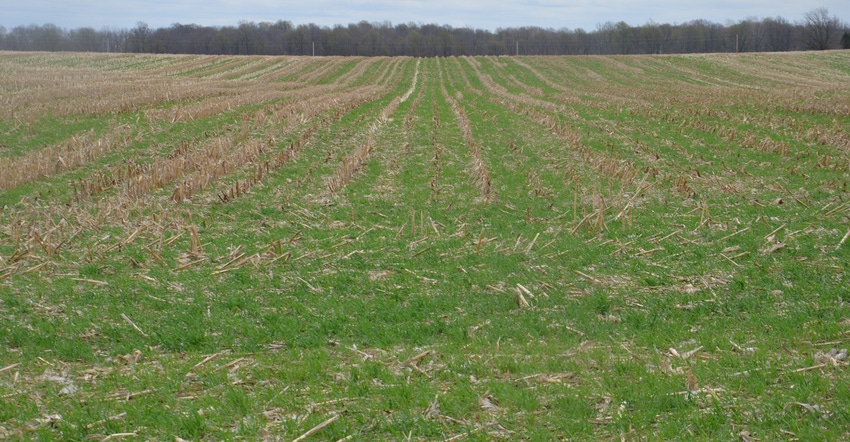May 25, 2022

As the adage says, “A journey of a thousand miles begins with the first step.” Soil health is a journey, a series of steps toward the goal of regenerated soil that is biologically active, resilient and able to deal with changing climate conditions.
Integrating cover crops into your system is a series of steps. You might start with a winterkill species mix, such as oats and radishes. Then you might move to cereal rye that will overwinter and be terminated early while it’s still vegetative. Once you’re comfortable with an overwintering mix, let some fully mature and try “planting green” into a standing cover crop. Then terminate the cover crop with either herbicide or a roller crimper.
New questions
More questions arise as you move deeper into the system. Many cover crop species that are planted across Indiana are “variety not stated,” or VNS. Annual ryegrass is one cover crop species where specific varieties are discussed, but other cover crops such as cereal rye are generally VNS. Farmers across the state making planting green a standard part of their operation are now looking at specific cereal rye varieties.
Why does it make a difference? Research shows that VNS cereal rye may have up to 10 different varieties within the mix. In some cases, this may not matter. However, if you’re trying to terminate cereal rye with a roller-crimper, the rye must mature at the same time. If you have VNS cereal rye, different varieties within the mix may break dormancy at different times, resulting in these various varieties becoming mature at different times.
When fully terminating cereal rye with a roller-crimper, whether in an organic system or because you’re trying to reduce herbicide use, rye must be dropping pollen. This can be a challenge if various varieties in a VNS rye mix reach maturity over several days, or even over a period of 10 days.
Find solutions
This is where the advantages of planting a variety-specific cereal rye such as Aroostook or Elbon come into play. In some cases, there are more seeds per pound of a specific variety of rye, so there may not be an additional cost to planting it over a VNS rye. A variety-specific rye should break dormancy at the same time with all plants maturing at the same rate, and reaching pollen drop at the same time.
Along with consistent maturity rate, variety-specific cereal rye also tends to reach maturity 10 days-to-two weeks prior to VNS rye. This earlier maturity date allows an earlier planting of your cash crop while still terminating the rye with a roller-crimper. Planting your cash crop when you want to plant and terminating your cover crop when you want to terminate is the ultimate goal.
Keep moving forward on your soil health journey by taking that next step. If you have reached the point of wanting to terminate your cereal rye with a roller-crimper, consider the benefits of using a variety-specific cereal rye.
Donovan is a district conservationist with the Natural Resources Conservation Service. He writes on behalf of the Indiana Conservation Partnerhsip.
About the Author(s)
You May Also Like






